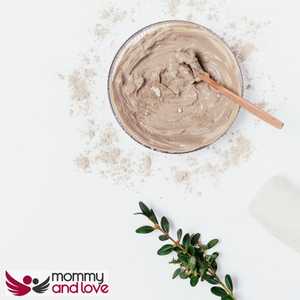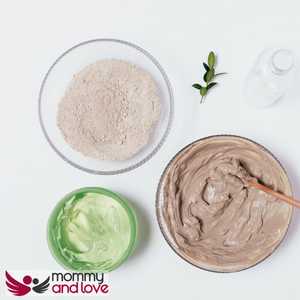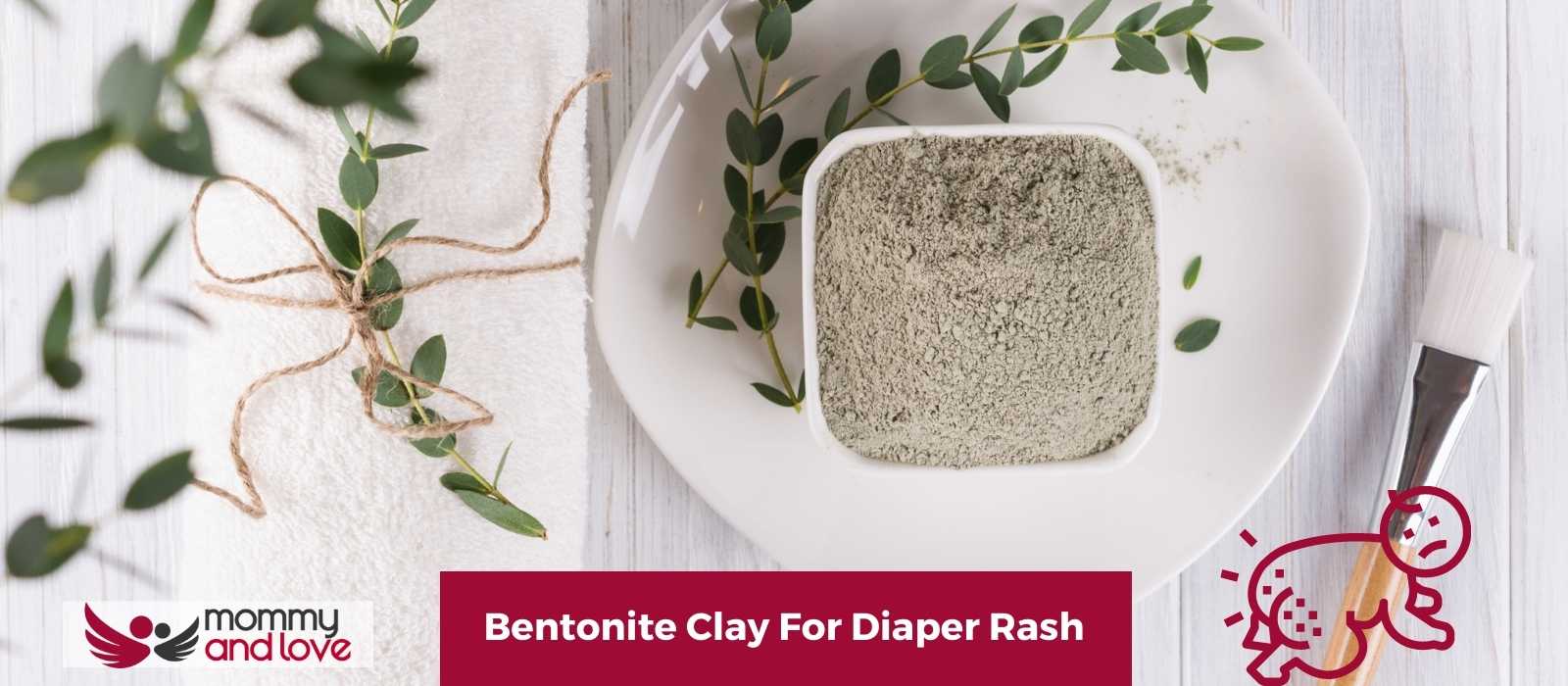If you are looking for an all-natural remedy for diaper rash, try bentonite clay. Bentonite clay is a healing clay that has been used for centuries to treat a variety of skin conditions. It is made up of minerals that help to draw toxins and impurities from the skin.
Bentonite clay is also effective for treating other skin conditions, such as eczema and psoriasis. It can be used as a face mask or added to a bath.
What is Bentonite Clay?

Bentonite clay is a type of clay that is most commonly used for detoxification and skin care purposes.
It is formed when volcanic ash combines with water, and it has a high concentration of minerals such as potassium, sodium, and calcium.
Bentonite clay has a strong negative electrical charge, which makes it effective at drawing toxins and other impurities out of the body. It can be used internally or externally, and it comes in a variety of forms, including powders, capsules, and tablets.
Benefits of Bentonite Clay
Some of the benefits of using bentonite clay include improved digestion, better skin health, reduced inflammation, and enhanced detoxification. It is also effective at treating candida overgrowth, and it can be used as a natural deodorant. Bentonite clay is also said to help increase energy levels and reduce stress.
Soothes Skin
Bentonite clay is a popular ingredient in skincare products because it is effective at soothing and healing the skin. It can be used to treat a variety of skin conditions, including acne, eczema, and psoriasis. Bentonite clay is also said to help reduce the appearance of wrinkles and age spots.
Fight off Bacterial Infection
Bentonite clay is known for its ability to draw toxins and impurities out of the body. This makes it a popular choice for detoxification programs, and it can be used to help rid the body of harmful chemicals, heavy metals, and other pollutants. Bentonite clay can also be used to treat candida overgrowth and other serious bacterial infections. This makes it ideal for use in the diaper area to soothe irritated skin and help fight bacterial and yeast rashes.
The clay minerals can absorb bacteria and viruses, helping heal diaper rashes, making it ones of the best natural remedies for a baby’s diaper rash.
Can you Use Bentonite Clay on Babies Rash?
Yes, bentonite clay can be used on babies’ rash. In fact, it is often recommended as a natural treatment for diaper rash and other skin irritations. You can use it as a powder or as a base to make your own diaper rash cream.
How does Bentonite clay cure diaper rash?
Bentonite clay is a type of healing clay that has been used for centuries to cure various ailments. There are many different ways to use bentonite clay, but one of the most popular applications is for curing diaper rash. Bentonite clay is a natural antiseptic and helps to draw out toxins from the skin. It also helps to soothe inflammation and irritation.
Homemade Natural Diaper Rash Cream with Bentonite Clay

Make sure that you use calcium montmorillonite clay or calcium bentonite clay products and not sodium bentonite clay.
You can use whatever essential oils you prefer (we’ve done a guide to the best essential oils to use on diaper rashes).
Ingredients:
- 1/4 cup bentonite clay
- 1/4 cup apple cider vinegar
- 2-3 tablespoons water (depending on desired consistency)
- 10 drops lavender oil
- 10 drops tea tree oil (or essentials oils of your choice)
- *optional – 1 tablespoon honey
Instructions:
1. In a small bowl, mix together the bentonite clay, apple cider vinegar, and water. If the mixture is too thick, add more water until desired consistency is reached.
2. Add the lavender oil and tea tree oil, and stir to combine.
3. If using, stir in the honey.
4. Transfer the mixture to a glass jar or container with a lid.
5. Store in a cool, dark place.
Use as needed to treat diaper rash. Apply a thin layer of the cream to the affected area and allow to dry. Reapply as needed.
This is safe to use with cloth diapers.
Shea Butter & Bentonite Clay Powder Homemade Diaper Rash Cream
Ingredients:
- 1/4 cup shea butter
- 1/4 cup bentonite clay powder
- 10 drops lavender oil
- 10 drops tea tree oil
Instructions:
- In a small bowl, mix together the shea butter and bentonite clay powder. If the mixture is too thick, add more shea butter until desired consistency is reached. A thick paste is best.
- Add the lavender oil and tea tree oil, and stir to combine.
- Transfer the mixture to a glass jar or container with a lid.
- Store in a cool, dark place.
- Use as needed to treat diaper rash on baby’s skin. Apply a thin layer of the diaper cream to the skin infections and allow them to dry. Reapply if needed.
Bentonite clay can also be mixed with cornstarch powder to make a baby powder for use in the diaper area and used on the diaper area. These are cloth diaper safe but do not have a long shelf life.
When using any of these creams always do a skin patch test first and check for any allergic reactions. All of our DIY recipes can be adjusted to suit you better and none are for internal use!
Mixing Bowls
It’s important when mixing any bentonite clay mixture, not to use metal bowls as they collect heavy metals. Use a glass bowl to mix and store in a mason jar for the next batch of diaper dermatitis.
Take Away on Using Bentonite Clay Diaper Rash Cream
You might be used to using bentonite clay for a hair mask or face masks or even as a mineral-based sun lotion, but just like coconut oil, it’s one of those fabulous natural ingredients that not only has health benefits but can also be used for lots of different applications.
Because it removes toxins, it really helps clear up infantile diaper dermatitis. You can mix it with calendula cream to make a simple lotion, or use one of our DIY recipes above.

This article was written by: Gian MIller – Full-Time Writer, Baby Whisperer & Dad of 3.
Gian spends a lot of his time writing. A self-proclaimed baby whisperer, Gian has been through it all with his own children and is passionate about sharing his hard-won wisdom with other parents. When he’s not writing or changing diapers, you can find him playing the guitar or watching baseball (or preferably both at the same time).




